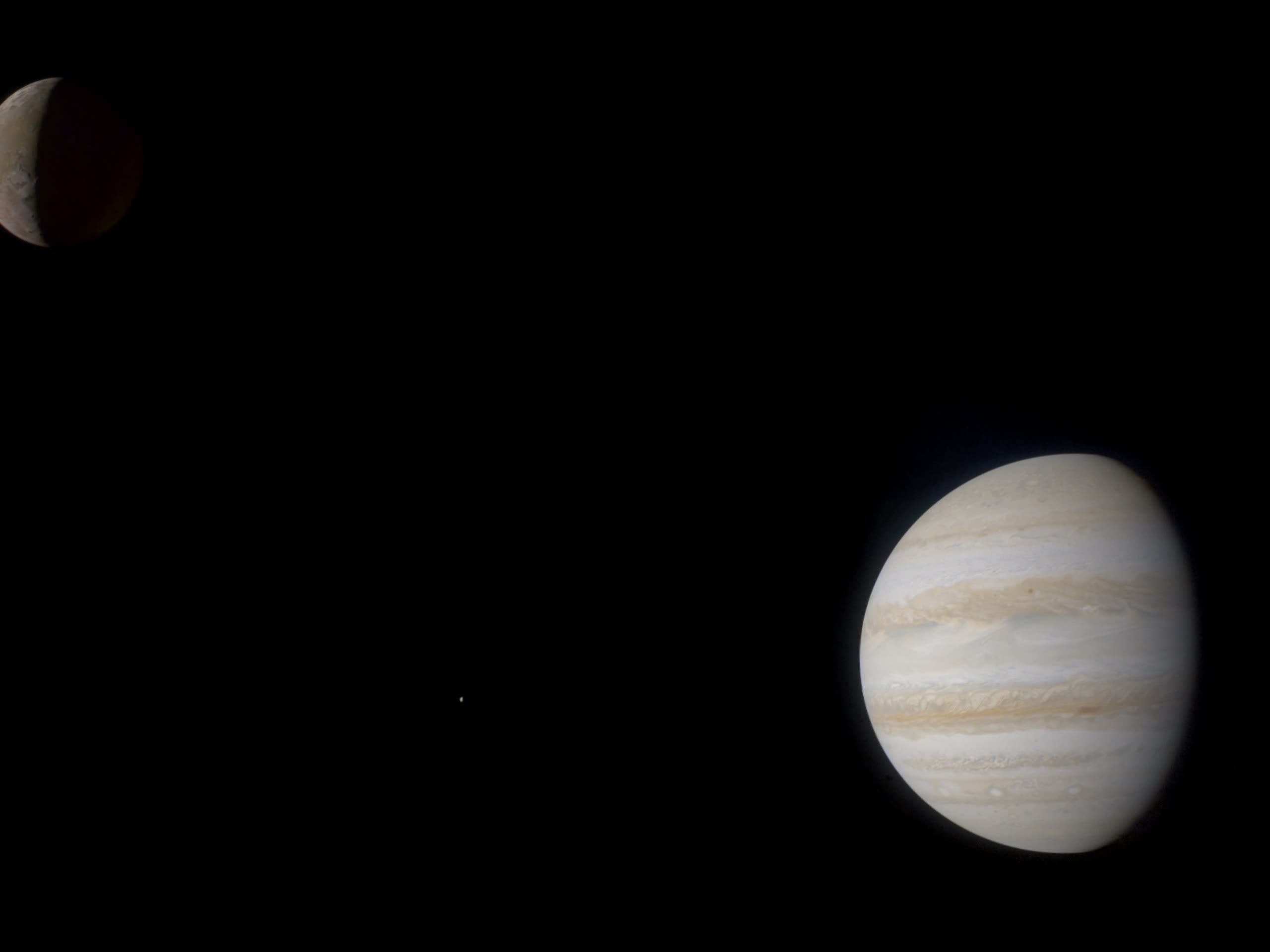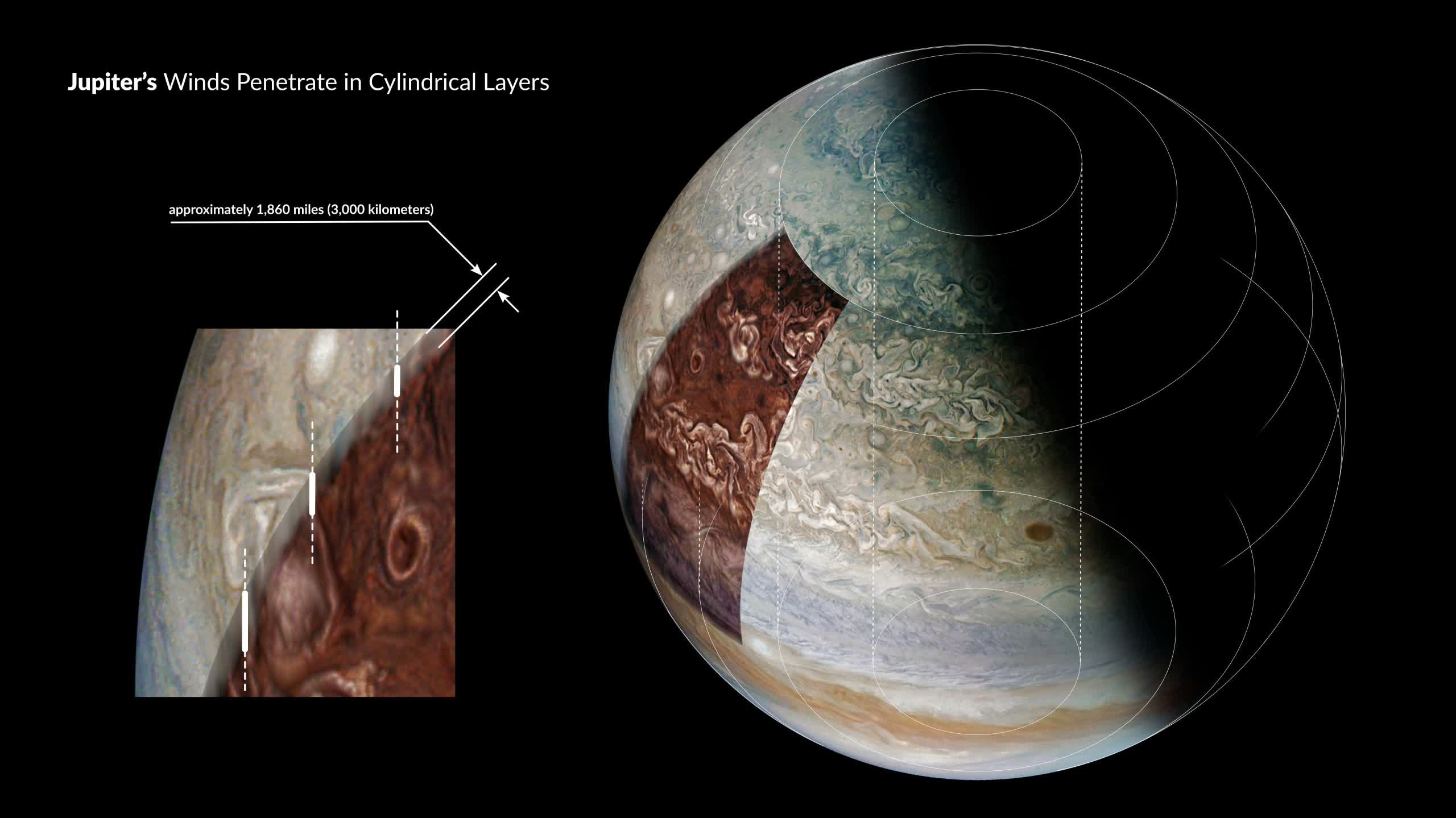The big picture: On a flyby earlier this month, NASA's Juno spacecraft captured the clearest images of Jupiter's moon Io in over two decades. However, the same flyby also yielded stunning new shots of the giant planet itself. The satellite has been circling Jupiter and taking pictures of its moons since arriving there in 2016.

Since the Juno mission's most recent flyby of Jupiter and one of its moons, more detailed pictures of the gas giant have appeared in the official repository. Citizen scientists process the raw images and provide color correction to give viewers a comprehensible interpretation of the subjects NASA is studying.
An especially striking photo (above) shows Jupiter and its volcanic moon Io at the outer edges, with Europa between them in the distance. A diagram (below) illustrates the cylindrical layers of wind that penetrate the solar system's largest planet parallel to its spin axis. Scientists learned about the structure by studying gravitational data collected during Juno's December flyby. Other pictures provide a new, close look at Jupiter's famous clouds and storms.

NASA launched Juno in 2011, and it has spent almost six years observing the Jovian system, making dozens of passes by Jupiter. The satellite is studying the planet's gravitational field, magnetosphere, and other elements to help solve lingering fundamental questions about it. For example, scientists still aren't entirely sure how Jupiter formed or whether it has a solid core. The mission is planned to continue until September 2025, after which the spacecraft will dive into the planet's surface.
Additionally, the spacecraft has provided close-up snapshots of the moons Ganymede, Europa, and Io. Pictures from the recent flyby deliver a stunning new look at the over 400 volcanoes covering Io's colorful surface. Juno made the closest flyby of the moon since the 2002 Galileo mission.
Juno isn't the only space mission planned for observation of Jupiter. The European Space Agency launched the Jupiter Icy Moons Explorer (JUICE) satellite last April, and it is expected to reach the planet's orbit in July 2031. One of its gravitational assists involves a flyby of Venus next year, and upon reaching its destination the satellite will provide more new images of Ganymede, Europa, and Callisto.
Additionally, NASA will launch the Europa Clipper spacecraft in October 2024. The mission is expected to reach Jupiter's orbit in April 2030, after which it will closely study Europa to determine whether the ocean beneath its surface has the conditions necessary for life.
https://www.techspot.com/news/101876-nasa-juno-mission-captures-incredible-new-images-jupiter.html